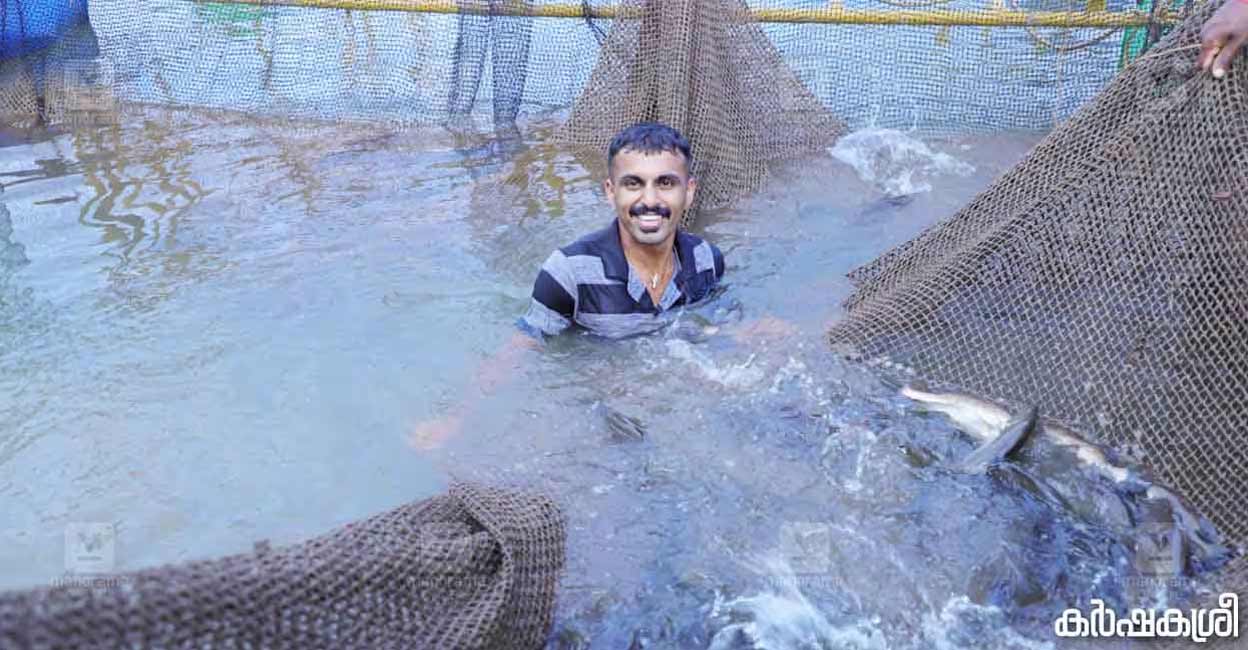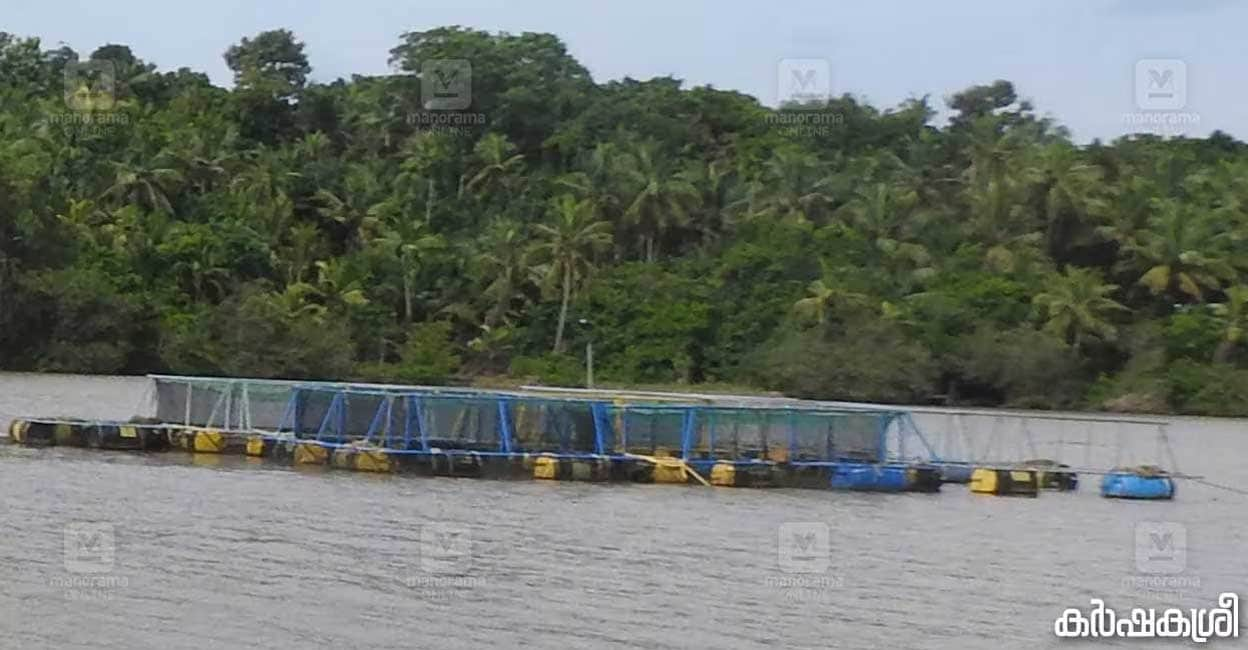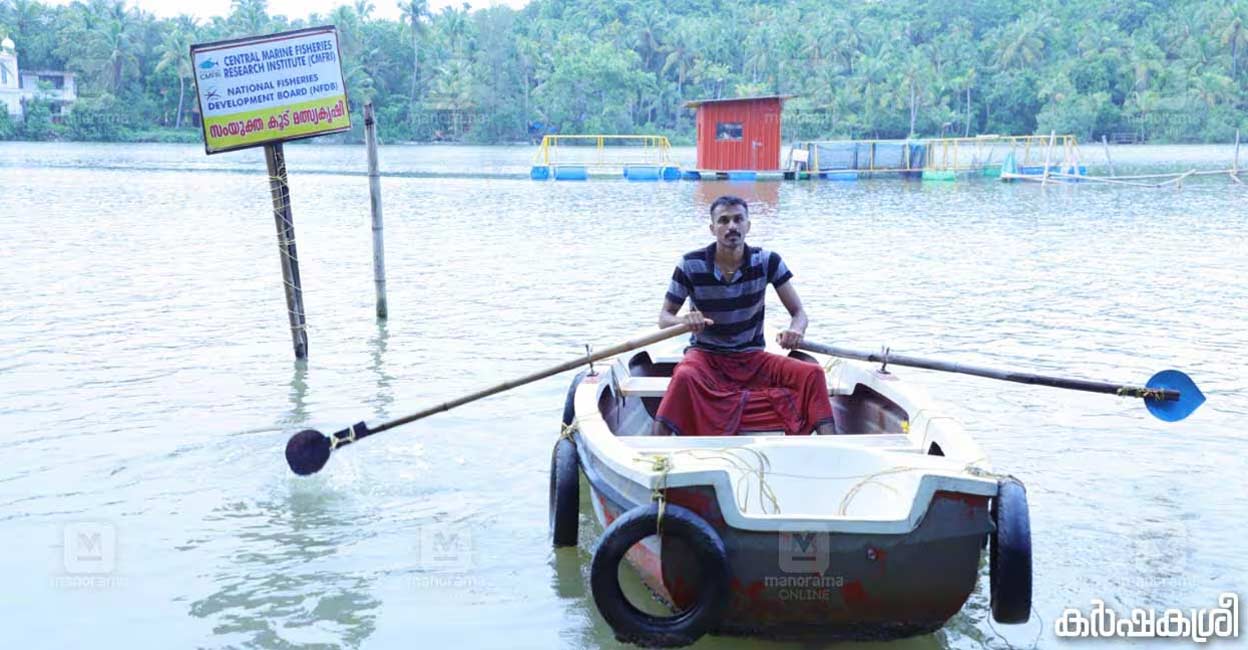A farm without borders: Soldier's inspiring journey to fish farming

Mail This Article
"Is there any particular reason that led you to pursue cage fish farming as your profession after leaving the defence force and venturing into farming?" This was one of the questions asked to Dinil Prasad by a panel of senior officials during an interview conducted for the selection process of the state government's 'Thozhilali Shreshta' award.
"There are three primary reasons to choose cage fish farming. Many individuals in our country, including myself, have a keen interest in farming. A significant challenge they encounter is the limited availability of agricultural land. Even when land is accessible, the rental costs can be very high. However, cage fish farming doesn't require any such hassle and can be done without incurring any rental expenses. Additionally, cage fish farming provides good income.
Unlike conventional fish farming, which yields profits only once a year, cage fish farming can generate income on a nearly daily basis. Another thing is that fish cultivated in cages situated in rivers and backwaters tend to possess superior taste and quality compared to those raised in ponds or tanks, resulting in higher market prices. Should cage fish farming gain popularity, it would provide many individuals with a reliable source of income while ensuring consumers have access to toxin-free fish." Dinil Prasad from Parapram Dishnanivas in Pinarayi, Kannur, asserts that these insightful observations regarding farming contributed to him earning the 'Thozhilali Shreshta' award.

Dinil Prasad, after completing a five-year tenure in the artillery division of the army, accidentally learned about the fish cage farming initiative organized by the Central Marine Fisheries Research Institute (CMFRI), a central government institution located in Kochi. Recognizing the significant potential for fish farming in the Anjarakandi River adjacent to his residence, Dinil noted that, despite the presence of numerous rivers, cage fish farming was relatively uncommon in the northern districts at that time. Therefore, he familiarized himself with the farming techniques by visiting various farms in Ernakulam. The enthusiastic young man from the northern district received comprehensive support and technical guidance from the CMFRI officials, including Dr. Imelda Joseph, who served as the Principal Scientist at that time. Currently, Dinil Prasad not only manages fish cultivation in seven cages but also extends his expertise and technical support to numerous cage fish farmers throughout the State.
Knowledge in fish farming
Initially, Dinil constructed two cages. The primary components of each cage consist of a frame that floats on the water's surface, with an HDP net cage suspended from it into the river. Drums, secured at specific intervals, assist in keeping the frame buoyant. The fish are cultivated within an HDP net cage that measures 4 meters in length, 4 meters in width, and 2.5 meters in depth. The cages are positioned such that they are half a meter above the riverbed, oriented towards a 3-meter deep area located approximately 30 meters from the shore.
While it is possible to construct cages using PVC pipes, Dinil asserts that GI frames offer greater strength and durability. The frame cage requires additional strength as it is frequently accessed for feeding and harvesting purposes. Additionally, a surveillance camera and a watchman’s shelter are necessary for monitoring. The total expenditure for the two cages, along with associated facilities and fish spawn, amounted to approximately Rs. 3 lakh, with a 40% subsidy provided by the Fisheries Department.
The introduction of fish spawn occurs during the months of September and October, following the heavy monsoon season. The harvesting process commences in April. As the fish spawn are introduced in stages starting from September, harvesting can take place throughout the year beginning in April. Fish that exhibit slight growth are captured and moved to smaller net cages. This method offers the advantage that we do not need to lift the large net cage, along with its substantial weight of fish, out of the water each time a customer wishes to make a purchase. Instead, customers can be conveniently given one or two kilos from the smaller cage. This approach also minimizes the stress experienced by the fish, which would otherwise occur from the frequent lifting of the larger net cage.
Pearl spot and Kalanji
Dinil has been cultivating pearl spot (karimeen) and kalanji species since the beginning. He emphasizes the significance of selecting and raising species that possess a high market value, with kalanji and pearl spots being prime examples. For many years, both species have maintained a price range of Rs 450-500 per kilogram. The seeds of kalanji are also valued highly, averaging Rs 46 each, while pearl spot seeds are priced at Rs 10. Both species exhibit strong immunity and are resilient to minor fluctuations in river water conditions. In a cage dedicated solely to kalanji, it is possible to accommodate 1,000 spawns, whereas a cage for pearl spot can hold 1,200 spawns. They can also be raised together in the same cage. Although kalanji can thrive on artificial feed, Dinil asserts that it is more lucrative to feed them 'non-veg' options.

They are initially fed with trash fish in the hatchery, and once placed in the cage, they are fed small fish sourced from the market. Pearl spot, on the other hand, should be fed artificial feed. Even when raised together, kalanji, accustomed to 'non-veg', will show little interest in artificial feed, thus posing no risk to the feeding of pearl spot. Kalanji can reach a weight of one kilogram in 6-8 months, while five pearl spots will also achieve this weight in the same timeframe. Raising 1,000 kalanji can yield an average income of Rs 3.5 lakh within 6-8 months, whereas raising 1,000 pearl spots can generate an average income of Rs 90,000 in the same period.
After accounting for feed costs, the profit is approximately half of the total revenue. Although kalanji offers higher profits, it also entails increased labour, as daily market visits are necessary to purchase trash fish, which must be crushed and fed to them. In contrast, the primary challenge with pearl spots is the requirement to provide artificial feed twice daily. Dinil primarily manages the pearl spots in most cages. He also communicates harvest information to customers via WhatsApp. Additionally, he operates a hatchery that produces and sells baby pearl spots.
River water can undergo alterations due to several reasons, such as rainfall and contamination. These changes may occasionally result in issues, including fungal infections within the cages. To avoid this, it is essential to periodically elevate and clean the cages. Additionally, Dinil generates supplementary income by constructing cages for fellow farmers and offering the above-mentioned maintenance services.

What is cage aquaculture?
Cage fish farming involves the construction of a framework using PVC or GI pipes in open water bodies, to which net cages are affixed. Fish spawn is then introduced into these cages, where they are fed and cared for. This method is currently practiced in various water bodies, including seas, backwaters, rivers, ponds, shrimp ponds, and large rock pools. Different species of fish can be raised in separate cages within the same water body. The harvesting process is easy, and by introducing fish spawn into different cages at various growth stages, consistent sales and income can be achieved throughout the year.
Phone: 9544141314

